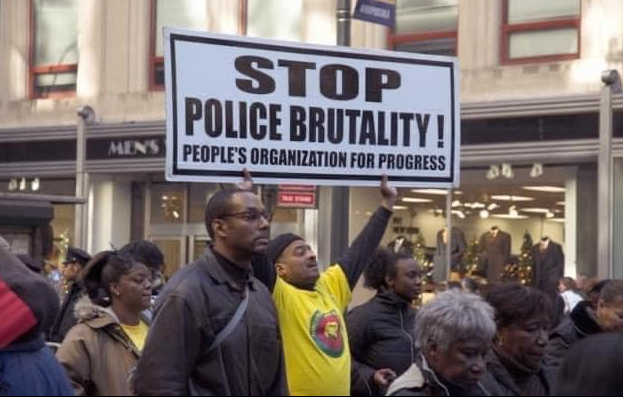PHOTO: THE ULTIMATE-HIGH-PRIEST: 1960’s Revolutionary-drummer-scientist-herbalist-mixed-martial-artist-master-acupuncturist-teacher-horticulturist-pioneering-cardiac-researcher-master-chef-architecturalist-sculptor-painter-college-artist-shaman-healer Milford Graves (left) and Nova Z backstage at Roulette for Vision Festival 24 on 6/11/19 in Brooklyn, New York. Just before this photo was taken, Mr. Graves bestowed my daughter with the name Nova (the Z- short for “Zupreme-“came from Pharoah Sanders six months later). The racist-white-centerd-New York Times has yet to publish an obituary on Mr. Graves- the ultimate New Yorker- yet they promptly published an obit on Chelsea-Massachusetts-born-white-jazz-keyboardist Chick Corea two days after his passing. Coincidentally both Graves and Corea began their professional career IN THE SAME BAND and died within days of each other. In fact it was Graves who gave Corea his first big break when he told band-leader-Montego Joe Sanders- that, even though Corea was Italian, to let him join the Latin-Jazz-dance-combo.
https://twitter.com/burn_amb/status/1360378272341778432
1960’s Revolutionary-Free-Jazz drummer Milford Graves passed away last Friday 2/12/21 at age 79. If his innovative and explosive-dynamic free-jazz drumming that he created himself was all Mr. Graves was known for, he would have left an indelible mark on the history of music, Jazz and drumming.
However Milford Graves was far more than just a jazz drummer.
Like Leonardo Da Vinci, Milford Graves was modern-day renaissance man way ahead of all his contemporaries in many fields of study and whose complete body of work overlaps several mediums such as herbal medicine, acupuncture, cardiology, martial-arts, education, horticulture, cooking, architecture and art.
Above all the titles and merits of Milford Graves- above all else- he was a healer. A healer of broken individuals, communities and the entire planet. Every breath he took and step he made- with every beat of his drum- Milford Graves tried to heal those around his orbit and the planet as a whole. All his passion and insight into percussion and the rhythms inside the human body- at its center- was all about healing.
Just like how Mr. Da Vinci ran circles around his contemporaries that lived during his time in the 15th Century, we here in the 21st Century will take a long time to catch up with one of the great forward-leaning artists and thinkers in our lifetime. What Da Vinci was to western culture, Milford Graves is to global-culture; an-afro-futurist-shaman grounded in both rhythm, nature, health, compassion towards all life and bridging divides on an international scale between Eastern and Western cultures.
For this correspondent, Milford Graves was far more just than his music and body of work. He was my teacher, sensei, guru and dear, close friend. He was the only teacher I ever had who did not begin to speak slow and loud to me after learning I am completely dyslectic and the only one who encouraged me to take a shot at publishing( I thanked him for that in the acknowledgments of my first book- Ambushed: Secrets Of The Bush Family, The Stolen Presidency, 9-11 & 2004 (Trine Day Press 2004.
For all those who ever met or saw Milford Graves live, it usually was a life changing event. For those lucky musicians, artists and others who spent as considerable amount of time- as I did studying with him- the way of Milford Graves becomes an almost all-encompassing-navigating life-force, influencing everything you think, create and do in life.
THE WAY OF MILFORD GRAVES
Milford Graves was born August 20, 1941 in Jamaica-Queens, New York. When he was a child, a tenant who was renting a room in his family home died and left behind a pair of congas that nobody had reclaimed. Milford hit those drums for hours every day and as teen began to study Latin Jazz.
As a young teen Milford Graves pushed himself and the envelope as far as he could. Brooklyn drummer Andrew Cyrille said in 2019 that when he and Graves were young, Milford would jump off subway platforms and onto the tracks to race the subway to the next stop. Not on a parallel track- Graves would run in front of the subway and always beat it to the next platform.
Graves told me that as a teen and until he was twenty- he drank excessively. So much so that he began to develop serious stomach issues. His doctor told him if he did not quit drinking he could die within a year or two. He quit and began his life-long journey into herbal medicine and healthy eating.
After sobering up, in 1961, Milford asked his parents to give him “one year” to live at home, study percussion and play gigs with Latin dance bands. After that, he would move out and be on his own. They agreed and Graves maximized that year as much he could. He began playing the Indian tabla and began incorporating West African and Japanese poly rhythms with Latin and Indian time signatures and created his own global-rhythmic-cultural-stew decades before “world music” became a genre.
In 1964, as the new Free Jazz movement burst onto the scene in New York City, Graves saw Albert Ayler and his then drummer Sunny Murray play live at the electricity-free-Cellar Cafe in Manhattan. Ayler’s explosive overtones in the altissimo register combined with Murray’s “broken” beat and eerie-howls created a new sound in the world of jazz. Free Jazz’s non-melodic, non-rhythmic structure that Ayler and Murray created also repelled many jazz critics, club-owners and fans alike.
But for Milford Graves and many other young jazz musicians the “new sound” was an intoxicating and liberating force that freed the musician from conventional musical traps. Free Jazz was not just mere club entertainment. It was a much higher, noble form of art then the jazz that came before it.
Graves looked at Free Jazz as a new blank canvas to stamp his mark on the new sound with his unique internationalist -percussive color and palate. With Murray’s more minimalist hailstorm-of-bass-drum and waves of vibrating cymbals as the template, Graves went in the opposite direction with bold splatters of global-shaman beats that whirled around his drum kit like pile-up of race cars at the Indy-500 hitting a sharp curve on a ragged and muddy track.
MILFORD GRAVES LIVE IN JAPAN 1988
WATCH: https://www.youtube.com/watch?v=eEKtwSlNhek
Combining Murray’s broken beat with his own self-invented globally-infused-percussive playing, Graves became the most talked about and sought after drummer in New York. He jumped from drumming with Montigo Joe to Paul Bley and then to Giuseppi Logan all within a span of 6 months. After a recording session with Bley for the ESP Label, Graves met the label’s CEO Bernard Stollman and after another session and record with Logan, Graves formed his own Jazz collective- The New York Art Quartet – and hit the studio with poet Leroy Jones to record their self titled debut which All About Jazz reviewer Clifford Allen wrote that the group “cut some of the most powerful music in the free jazz underground.”
Drummers like Max Roach and Elivin Jones began showing up at Milford Graves’ live shows. Miles Davis, Sun Ra, Milt Jackson also started to be seen in the back of the room wherever Milford Graves was to play. Soon, Graves was declining all their offers to join them to record and play live. Graves may be the only musician to ever turn down Miles Davis- twice(Graves told me he found Davis extremely intimidating and didn’t like the way he treated his bandmates and other people in general . He thought Sun Ra was too cultish and sensed
Jackson’s Jazz Messengers were all junkies).
In the spring of 1967, Graves began playing Albert Ayler. Just the two of them started rehearsing in Graves’ studio apartment. Alyer later brought in other musicians, including his brother Don Ayler and started gigging regularly at Slug’s Saloon in the Lower East Side.
John Coltrane, who was also transformed by Ayler after first hearing him sit in with Cecil Taylor in Copenhagen in 1962 also took a radical departure from his more standard forms of Jazz improvisation that the critics, record companies and fans adored and dove head first into the deep end of the Free Jazz genre after A Love Supreme was recorded in December of 1964. From 1965 onward, Coltrane continually perplexed his mass of followers by releasing giant gobs of over blowing-tenor-screaming Free Jazz, becoming the new sound’s most prominent international ambassador.
When Coltrane converted to Free Jazz, critics for the first time began trashing his records.
LISTEN: John Coltrane: Om https://www.youtube.com/watch?v=x2HZQ70hpbU
(*recorded 10/1/65 -Coltrane & band dropped LSD before entering the studio, beating The Grateful Dead by a few weeks as the first band to “play the acid”)
But Coltrane didn’t care. Like Milford Graves, once he fell under the Free Jazz spell, Coltrane never looked back. The more critics slammed him, the more intense Free Jazz records he released. He also helped Alyer and many other Free Jazz comrades to get signed with the label he recorded with, Impulse Records. For Ayler’s first Impulse recording, he brought Milford Graves with him to the studio. The album, Love Cry, became a Free Jazz classic- yet it was the only major label recording of Graves’ entire career.
LISTEN: Albert Ayler-Milford Graves: Universal Indians
That same year, 1967, John Coltrane was looking to record with just himself and another drummer. He approached Ayler about working with Graves. Ayler told Coltrane that Graves was “my drummer” and told Coltrane- without consulting Graves- to look elsewhere. Graves told me he was upset that Ayler blocked him from working with Coltrane.
“I would have taken the gig,” Milford Graves told me (The recording was released as- Interstellar Space- a duo recording with just Coltrane and drummer Rashied Ali).
Coltrane died the following summer on July 17, 1967. Four days later at Coltrane’s personal request, Milford Graves, along with Ayler and Orrentte Coleman played two short blistering sets during his funeral at St. Peter’s Lutheran Church New York City.
LISTEN: Albert Ayler Quartet – Love Cry, Truth Is Marching In, Our Prayer (live) July, 1967, John Coltrane Funeral, St. Peter’s Lutheran Church, New York City https://www.youtube.com/watch?v=wO9UCV5APPA
After Love Cry, Graves was playing a concert in Newark, New Jersey in a large hall along with Leroy Jones and in the back of the concert hall, a gun went off. The audience panicked and started stampeding to the emergency exit signs. As the maely unfolded around Graves- after watching his drum set spill off the stage and crash into the orchestra pit- he told me he had come to the realization that along with the all night club sets- it was time to reinvent himself.
Graves started taking medical and veterinary classes and told me he started wearing Orthodox Jewish overcoat and hats. He stopped recording at gigging completely by the end of 1969.
In 1973, trumpeter Bill Dixon helped Graves become professor at Bennington College, where Dixon had worked since 1968. Graves soon became the most popular teacher on campus as his drumming classes, along with his epic Wednesday morning “Influences of Music” lectures were the most sought after classes by Bennington students for decades.
In one of those classes, Graves called me to the front of the class and asked me to put my hand on his wrist to gauge his pulse. When I told him I had it and he closed his eyes and sat very still in his chair. Soon his pulse began to slow down and soften to where I could barely detect it. Then it was gone. Milford Graves stopped his pulse. A few seconds later it started up again and he opened his eyes, looked at me and grinned a wide smile. “I told you I could do it,” he said looking straight to my eyes. But there was a larger lesson he taught that day: never doubt Milford Graves and the things he says ever again.
That included taking on the most built students on campus. After moving the chairs aside, no matter the strength of his opponent, Milford Graves dodged every strike and always pinned his opponent quickly and decisively. “I could take down Shaq” just as fast Graves told our class. That time I didn’t raise any doubts.
Graves taught at Bennington from 1973 to 2011 and influenced many artists of all kinds of disciplines. Dance-majors wanted to study dance with him even though technically- he was not a dance instructor. He continued recording and playing live- but on HIS terms.
Milford Graves also got into eastern medicine in the 1970s. He began studying acupuncture and invented his own form of mixed-martial-arts while the future UFC CEO Dana White was still in diapers. He called it Yara- a mix of West African wrestling-Shaolin-praying mantis-kung fu and the old swing jazz dance the “Lindy Hop.”
When he started hearing and experiencing for himself Black discrimination at Kung Fu schools in Chinatown- he began raising and breeding his own Praying Mantises to study what he told me was “the source” of the Praying Mantis school of Chinese Kung-Fu. “If you want to learn the Praying Mantis, you got to learn from the Praying Mantis. If you want to learn the Drunken Monkey, you got to learn from the drunken monkey,” Graves once told me.
Graves also studied herbal medicine and built an overflowing vegetable and herb garden in his tiny backyard in Jamaica, Queens next to the Yara Dojo Temple he built. Over time Graves, along with all his other disciplines, became a prolific horticulturist. He also was a master chef- and would hold private concerts in his basement that included courses of food like his take on African Peanut Butter soup and his infamous home-brewed herbal “hallucinatory tea.”
These home concerts were something Graves did well into the 1990’s and early 00’s. There were no tickets- you had to be invited by Graves himself- who only reserved seats for close friends and his favorite students from multiple disciplines. There were never any New York Times or Village Voice reporters allowed in to write hip stories. It was just us. Milford Graves and his closest friends and students. I was lucky enough to watch one of these shows that- along with Graves- included saxophonist Charles Gayle and bassist William Parker played late into the night. Among the many tragedies of Jazz- this trio never releasing a CD is high on the list.
In 2000 Milford Graves received a Guggenheim Fellowship and bought an assortment of computers and medical equipment to study and quantify his theories on cardiac health. Graves notices that cardiac doctors only observed a heart beat pattern but not the pitch or tone of the heart.
Graves started to discover that the pitch and tone of a patient heartbeat is equally if not more important than just the pulse and heartbeat rate. He started recording heartbeats of himself and fellow musicians. He started recording hearts of killers in prison to see if he heard a difference in their heartbeat tones. He also started creating compositions with his own and bandmates’ heart beats.
On April 21, 2010 I visited Milford Graves at his office in Bennington, Vermont. I brought my girlfriend who was pregnant at the time. I had not seen him in years. He was a little thinner and had trimmed his beard down, but he was still the same Professor Graves I knew in college. Same energy and intensity. He still talked, danced, drummed and swung head-high MMA kicks into the air as he had in that office for decades.
After his class lecture, he spoke with us. He asked what day we were each born and listened to our heartbeats with a stethoscope. He asked us when our baby’s due date was as well. He had written all of the information down on a notepad and within 15 minutes of silence had worked out some form of rhythmic calculations and went to his congas and started slapping the skins. Through drum patterns- he was going to increase our child’s “brain and body” skills with “tonal vibrations” designed for her Zodiac sign mixed with the “energies of the universe” Graves pulled into the drum like a magnet and shot back out through echoes of sound, into womb-liquid that our unborn child would absorb into her brain and body like invisible nutrients. We went back and forth with this for over four hours. Talking, asking questions, drumming more.
We walked in his class a little before 9AM and stayed there until 430PM (the class ended at 11:30AM) no lunch break. That’s how intense Milford Graves was.Near the end, I thought I might pass out, but Milford could have easily gone on for another four hours.
I don’t totally understand what he did exactly, but whatever it was, it worked. Everything Graves said would happen, did. He predicted her birthdate, personality traits, interests and talents like a bulls-eye on a dart board. As Graves predicted, she also gravitated to playing music and the drums.
When Graves met my daughter backstage at Vision Fest-24 in Brooklyn on June 11, 2019, Graves called my daughter “Nova” and the name has stuck ever since.
Graves also began to personally redesign the exterior and interior of his Jamaica, Queens home and received praise from several architecture magazines.
See POHTO of Milford Graves House, Jamacia-Queens, Ney Nork.
https://www.npr.org/2021/02/16/968386819/milford-graves-visionary-drummer-who-mapped-the-music-of-the-heart-dead-at-79
In 2018, a critically acclaimed documentary was released about Milford Graves called Full Mantis that explores the way of Milford Graves and all of his disciplines. The following year Graves was granted a process patent for a machine he created that creates stem cells from a patient’s own heart beat.
WATCH: Milford Graves Full Mantis – trailer | IFFR 2018https://www.youtube.com/watch?v=ePiESZA2I7Y
The pandemic did not slow down Milford Graves creative vision. Last fall the Institute of Contemporary Art in Philadelphia, Pennsylvania exhibited Milford Graves innovative paintings, cut-out-collages and sculptures.
WATCH: Curator-Led Tour of Milford Graves: A Mind-Body Deal
There are many musicians that people admire greatly. John Coltrane, Miles Davis, Bob Marley ect. While I don’t want to negate their music, there is something unique about Milford Graves. Something deeper, something that combines music and alchemy in ways that is not just esoteric- but tangible in the real world.
Above all of Milford Graves’ myriad of artistic and medical accomplishments and breakthroughs, what stands out most in my mind is the real magic he created behind the drums- music done on such a high spiritual plane. Milford Graves was a modern-day-global shaman that invoked an-primordial-inner-archaic-revival of buried-long forgotten senses around those lucky enough to be in his orbit.
The world lost a great soul when Milford Graves left this planet on 2/12/21 and left behind a vast treasure trove of amazing discoveries embedded in his body of work that we have not even begun to scratch the surface of. Just like with Da Vinci, it will probably take years if not decades for teams of experts to uncover and decipher all that Milford Graves researched and uncovered in his one-of-a-kind basement laboratory.
And when they do begin to unlock all of Milford Graves’ genius – like with old Leo- the world and humanity will take that next evolutionary step in the journey of our own human evolution.
ONE LAST THING:
I hate having to end this obituary on a negative tip, but after decades of consistently covering Milford Graves as kind of a eccentric-crazy-uncle that is just another part of the fabric of New York City, you would think the New York Times would have published a decent obituary about Milford Graves over the weekend.
So far the “Old Grey Lady” appears to be too busy investigating why their own news-room is filled with white-male racist reporters that can’t stop saying bigoted comments in public.
Chick Corea got a NYT obit two days after his passing (Milford Graves and Chick Corea started out in the same band in 1962, led by conga player Roger “Montego Joe” Sanders).
Oh yeah. I forgot Chick Corea coincidentally just happens to be white. Apparently, the New York Times did not forget that fact and like all racist medida-institutions, in their mind, acted accordingly.
They were quick to write an obit on some white male Jeopardy contestant who died over the weekend too- but not Milford Graves?
NEWSFLASH NEW YORK TIMES- not publishing an obituary on Milford Graves is equally racist as that ignorant white male journalist you just fired. It’s not just a handful of benighted white male editors and reporters that are at fault. It’s your whole damn organization! It’s WAY too white for New York City and the Twenty-first century for that matter.
This isn’t just your run-of-the-mill-benighted-white-male-newsroom-racism. It’s total disgrace and a complete abandonment of everything The Times and New York City are supposed to be about. NYC is not Boston or Phili. The arts section of the NTY should not be just about
Taylor Swift and whatever white people busllshit is floating around the Upper West Side.
Dropping the ball on Milford Graves in 2021 is the equivalent of failing to report that John Lennon was shot and killed in 1980. In fact my ten-year-old daughter beat the NTY to print last Friday and she lives four hours north of NYC. Maybe you should hire her to be your weekend Obituary editor? She is doing a better job than the one you got now!
https://twitter.com/IamNovaZ1/status/1360451749836976130
That is how pathetic and out of touch the NYT is with the city they supposedly claim to love so much and cover better than anyone.
What. A. Fucking. Joke.
As I’m writing this, the Times just posted a Rush Limbaugh obit- within an hour of his death! And still, no Milford Graves obit?
And you still want the world to believe The New York Times is not a white-racist-snake-pit disguised as “the paper of record?”
Instead of shaking your waspy-boomer-heads and saying gee, next time we will do better, why doesn’t NYT Publisher Arthur Gregg Sulzberger get off his overpaid-white-entitled-uniformed-German-Episcopal-Congregationalist-raised-in-DC-ass and call a reporter-say I don’t know, Corey Killgannon- tell him to write a full-page obituary.
TODAY!
Then “A.G.” should write himself a resignation letter maybe with something like “I now realize my aloof-benighted-whiteness is literally blinding out the important news we should be covering in this city we pretend to be omnipresent in.”
Think I’m being too harsh A.G. ? Let’s have a public debate about your journalistic incompetence- anywhere, anytime- you can even get one of your boomer-stooge-NYT-journalists to moderate!
Or, “A.G.” in your vapid-New-New-Yorker-white-benighted-upper-west-side silence, you can admit I’m right.
https://www.nytimes.com/section/obituaries?action=click&module=Well&pgtype=Homepage


















